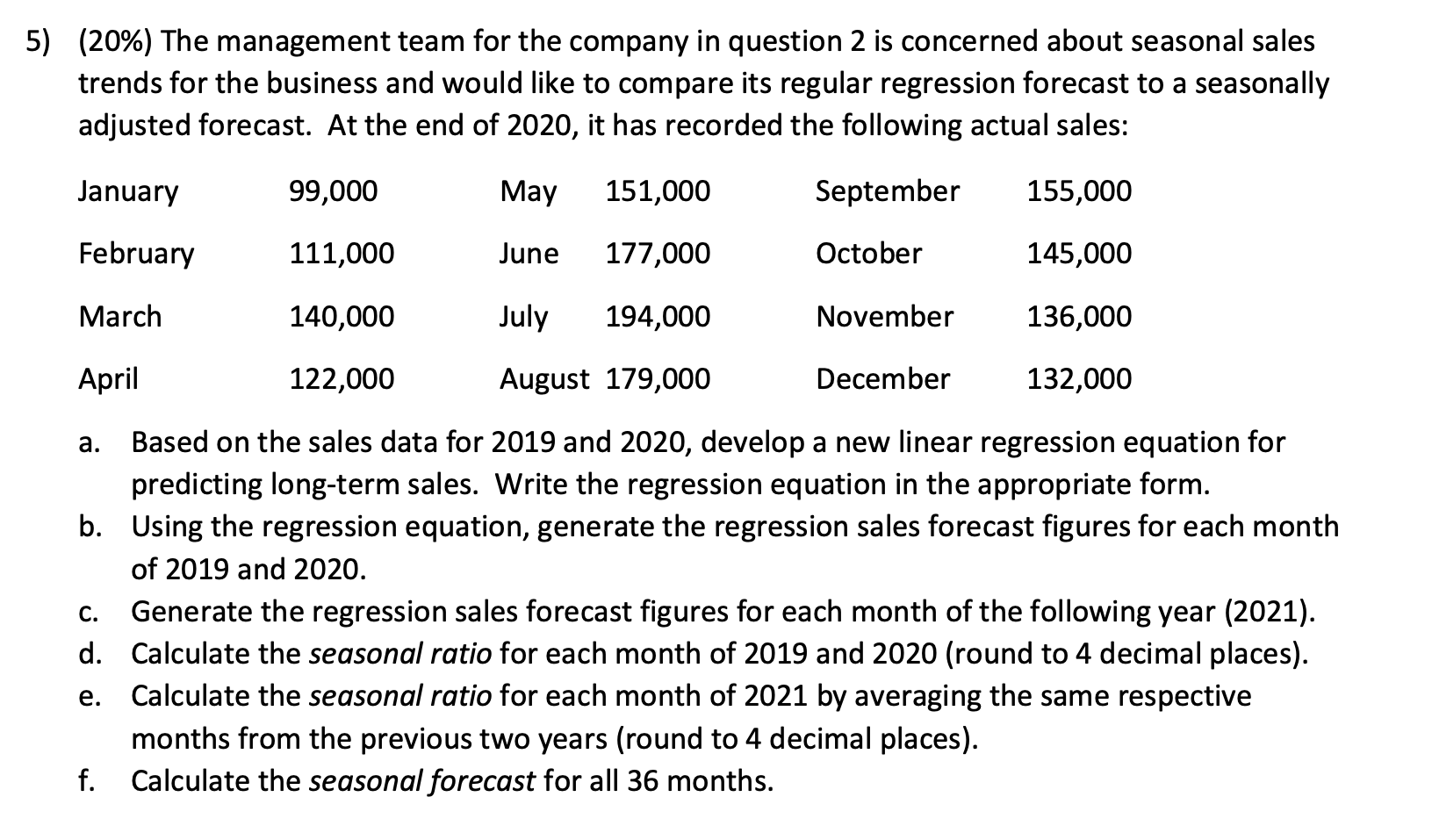Answered step by step
Verified Expert Solution
Question
1 Approved Answer
2) (20%) Assume last year's (2019) monthly sales figures for a business were: (20%) The management team for the company in question 2 is concerned


Step by Step Solution
There are 3 Steps involved in it
Step: 1

Get Instant Access with AI-Powered Solutions
See step-by-step solutions with expert insights and AI powered tools for academic success
Step: 2

Step: 3

Ace Your Homework with AI
Get the answers you need in no time with our AI-driven, step-by-step assistance
Get Started

